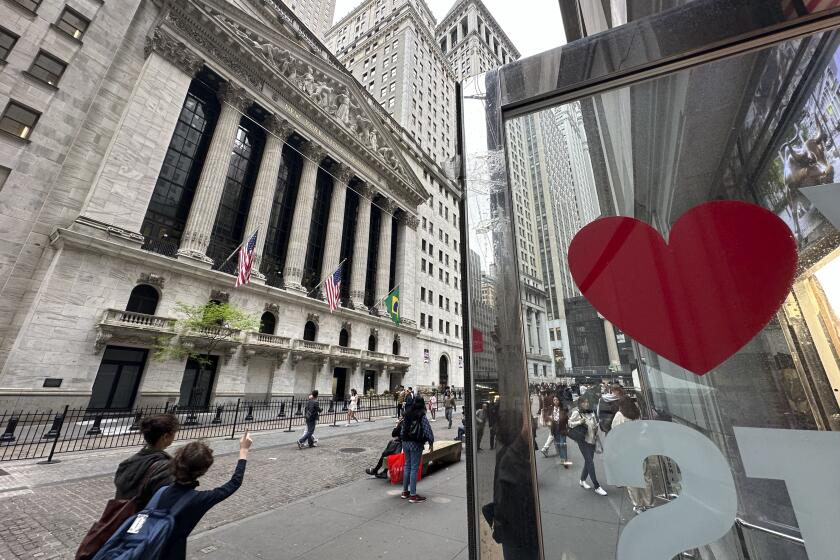How GoNeo Got Where It Is Offers Insight Into Getting Start-Up Funds
How do you finance the start-up? What does it take to overcome the high odds that your business will die at birth for lack of capital, long before it has a chance to grow and prosper?
For starters, forget about getting someone else to finance it for you. Thousands of Americans launch business ventures every year, but no matter what you hear about angel investors or venture capitalists, you must generally risk your own money in starting a business. At best you may get help from family and friends, but if the venture fails, you shoulder the burden yourself.
Despite the odds, however, some businesses succeed. How do their founders do it? There’s no easy answer. But success is not a matter of luck. More often, success comes to those who plan ahead, keep their eyes open and make the most of their strengths.
It helps to hear success stories--and you get a good one from Sebastian Grande and his partners, Marko Babic and Jeff Galant, who founded their company, GoNeo, on a shoestring three years ago and now run an operation generating revenue of $9 million this year and are projecting $12 million for the next. GoNeo designs and distributes neoprene cases for cell phones, pagers, Palm Pilots, two-way radios and other electronic devices. It employs 15 people at its Santa Monica headquarters.
In getting GoNeo off the ground, the partners had three strong cards in their hand:
* They were among the first to market with the product;
* They persuaded Body Glove International, the big Hermosa Beach maker of high-tech wetsuits for divers and surfers, to license GoNeo to sell phone cases under the Body Glove name.
* They knew something about an unusual--and expensive--financing technique known as purchase-order financing.
The partners--Babic is chief executive, Grande chief financial officer, and Galant chief operating officer--started out in 1996 with less than $50,000 among them, most of it from their own savings, but some of it from family members and friends.
With that they manufactured some prototypes and took them to the Consumer Electronics Show in Las Vegas in January 1997. The prototypes generated $50,000 in orders from cellular phone manufacturer Ericsson--a key development--and with those orders in hand, the partners went to a lender (now defunct) specializing in purchase-order financing.
Purchase-order financing allows you to borrow working capital against the value of a purchase order in much the same way you would borrow against the value of inventory or of receivables. Not every lender will finance purchase orders, however, and the technique won’t work for every business.
For one thing, lenders want to see purchase orders from big-name customers; they don’t finance purchase orders from companies they don’t know well. For another, they advance only a small part of the value of the purchase order, and they charge a very high rate of interest on any purchase-order loan.
To put it bluntly, purchase-order financing is not for the fainthearted. But the GoNeo partners knew what they were doing, and they figured that because they expected to dominate the market with their products, at least in the early going, they could set their prices high enough to compensate for the risk inherent in purchase-order financing.
In any event the financing turned $50,000 in purchase orders into $20,000 in working capital, CFO Grande says, at an effective interest rate of something like 40%. With that, the company secured a bank letter of credit guaranteeing payment to a contract manufacturer in Asia, took delivery of the product--and made use of a second financing technique, factoring.
A very old business financing technique--and also an expensive one--factoring works much like borrowing against receivables, except that you actually sell your receivables outright at a substantial discount. By doing so you raise cash instantly, though as a rule you get far less than the receivables’ face value. The factor takes the risk of collecting, but stands to make a profit on the difference.
For the partners, factoring set them on the way to success. They still rely on factoring to raise working capital, but they plan to secure a line of credit from a commercial bank in the near future, which would cost less in interest.
“We have barely two full tax years under our belts, so commercial banks are still reluctant to give us a traditional credit line,” Grande says. “But factoring is flexible,” he adds. “We’re growing rapidly, and we sometimes require significant incremental financing, which we can get with factoring when our receivables increase significantly too. That’s important to us, and we’re willing to give up some points in interest to make sure we can grow.”
The lesson here, Grande adds, is that GoNeo made the most of its strengths: namely, the fact that it was among the first makers of cases for cell phones and the like, and that it got a license to market its product under a well-known name such as Body Glove.
It also made intelligent use of the only two capital-raising techniques available to it--first, purchase-order financing, then factoring. The strategy cost the company a good deal in interest, but the upside was that it allowed the company to get to market rapidly with a product that could command a premium price.
GoNeo also made sure to create a bond of trust with its suppliers in Asia, Grande says. The company pays them on time, and CEO Babic visits the company’s suppliers personally, keeping them abreast of the company’s prospects for growth and enlisting their support. The upshot: The suppliers now give GoNeo 30-day terms, eliminating the need for letters of credit, which can prove both expensive and cumbersome.
“You never have a free hand in pricing,” Grande says, “but because we had a unique product, we could structure our pricing and create margins healthy enough to support the high costs of our financing.
“We used nontraditional means in financing the first purchase orders and now in factoring our receivables, but they jump-started things for us.”
*
Next week: How a West Los Angeles software company improvised its way to success. Juan Hovey can be reached at (805) 492-7909 or at jhovey@gte.net.






